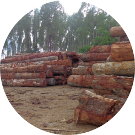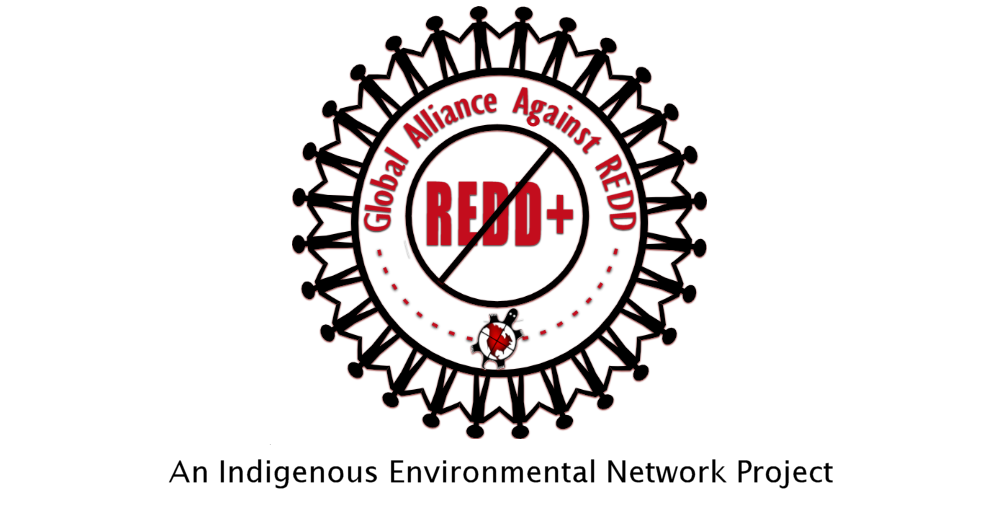The Jari Amapá REDD project, Brazil: Greenwashing illegal logging, a pulp mill, and a 48-year-old land grab
By Chris Lang.
 The Jari Amapá REDD+ project covers an area of 65,980 hectares in the Jari Valley in the state of Amapá, Brazil. The project is run by three companies, one of which, Jari Florestal, has just had its Forest Stewardship Council certificate suspended after being caught in an illegal timber scheme.
The Jari Amapá REDD+ project covers an area of 65,980 hectares in the Jari Valley in the state of Amapá, Brazil. The project is run by three companies, one of which, Jari Florestal, has just had its Forest Stewardship Council certificate suspended after being caught in an illegal timber scheme.
The three companies are Biofílica Investimentos Ambientais, Jari Florestal, and Jari Celulose. The latter two companies are part of Grupo Jari (the first is a logging company, the second a pulp company). Biofílica is a São Paulo-based company. Here’s how it describes what it does:
Aiming to contribute to the creation and development of a solid and reliable environmental market, Biofílica invests in an innovative business model that promotes the reduction of deforestation, valuation of standing forests and their environmental services, protection of biodiversity and reduction of carbon emissions.
In 2010, Biofílica presented a proposal to Grupo Jari for the REDD project, and is running the project on land belonging to Jari Celulose. Carbon credits from the project are sold on the voluntary market. In 2011-2012, the project generated 200,000 credits, but only managed to sell 40,000 of them. 15% of the money from the carbon credits goes to Biofílica and 85% to Jari Florestal.
But before looking at the REDD project and the illegal logging, we should take a look at the strange history of the Jari pulp mill.
The Jari Project
In 1967, a US billionaire called Daniel K. Ludwig paid US$3 million for 1.6 million hectares of land in the Jari Valley. His plan was to build a pulp mill.
In 1978, Ludwig shipped a pulp mill and power plant from Japan to Brazil. (It took 12 weeks to transport.) He built roads, an airport, a deep water port, a hospital, four schools, and 3,000 houses for company employees in Monte Dourado. As well as pulp production, he planned kaolin and bauxite mining, buffalo ranching and rice cultivation.
Here’s a video about the construction of the pulp mill:
The Brazilian military dictatorship initially supported Ludwig’s plans, but in the 1980s followingnewspaper reports that Ludwig was creating his own army, smuggling gold and diamonds, destroying the forest, and using slave labour, the military dictatorship became worried about the US colonisation of the Amazon.
in 1982, after investing US$1.3 billion, Ludwig handed over his Jari operations to a consortium of 23 Brazilian companies. No money changed hands, but the consortium took on the company’s debts. The Brazilian Development Bank, BNDES, supported the consortium with a US$180 million loan.
In 2000, the company was sold to the Orsa Group. The pulp mill was renamed Jari Celulose, and the Orsa Group is now called Grupo Jari.
Ludwig’s Jari Project had huge social and environmental impacts. The construction of the pulp mill attracted people looking for work. In 2001, the company employed 3,500 people, but 70,000 people lived in the area, many in shanty towns along the Jari River. Social problems include prostitution, drugs, poor sanitation, poor housing conditions, fires from faulty electrical installations, floods, and violence.
In addition, huge areas of forest were cleared to make way for plantations and to feed the pulp mill when the plantations failed. Local communities lost their land to plantations and many families moved to more remote areas, or to urban areas.
The company now has 120,000 hectares of mainly eucalyptus plantations, certified under the FSC system.
The Jari Amapá REDD+ project
The Jari Amapá REDD project is one of the projects reviewed by CIFOR in its “REDD on the ground” report. CIFOR’s researchers, Marina Cromberg, Mariana G Pereira, and Renata B Caramez, writethat in the area of the REDD project,
The rural population that has re-settled this area over the past decade suffers from a lack of formal land tenure and pollution from Jari Celulose (one of the companies of Grupo Jari), including contamination of soils and water from pesticides used in the eucalyptus plantations and siltation of streams from trucks transporting logs.
CIFOR notes that the REDD project developers see the threats to the forests to be “small-scale swidden agriculture, small- and medium-scale cattle ranching, and illegal small-scale logging by people living both inside and outside the area”.
Perhaps not surprisingly, the REDD project developers do not see the industrial tree plantations as a threat to the forests. Neither do they include the greenhouse gas emissions from the pulp mill, “because they are outside the scope of its REDD+ initiative”, CIFOR’s researchers note. They add that, “the industrial cellulose pulp production realized by Jari Celulose is a major emitter of GHGs”.
The project was certified in 2013 by VCS. The baseline was deforestation from 2000 to 2010, conveniently ignoring the removal of forests to make way for industrial tree plantations – that are clearcut every five years. The project has also applied for CCBA certification.
Here’s a small part of the REDD project on Google maps, showing a pattern of industrial tree plantations and remnants of forest:

“Our biggest challenge is land tenure clarification. It’s not only a problem we only have in Amapá but is an Amazon-wide issue. If land tenure’s not clear, we can’t distribute the benefits from the forest fairly—and without it, smallholders aren’t able to access rural credits.”
In three of the five villages where CIFOR’s researchers carried out interviews, people said that their first recommendation for the project would be to resolve land tenure. Nearly half of the people interviewed had insecure land tenure. Some of the villager’s comments reveal the tension with Grupo Jari:
“If Grupo Orsa (Grupo Jari) wanted to help, they would already have done that. They have forestry engineers, rural technicians, they have everything.”
“Grupo Orsa (Grupo Jari) is here with IMAP, giving fines…. It would be easier if they helped the families.”
“See the contradiction, the company from São Paulo (Biofílica) and the Fundação Jari come here to discuss a project that depends on the land tenure that Orsa (Grupo Jari) does not want to clarify.”
Illegal logging and the suspension of Jari Forestal’s FSC certificate
Jari Florestal is a logging company, with 545,000 hectares of FSC certified operations. But on 8 December 2015, FSC Brazil announced that Jari Forestal’s certificate had been suspended.
The suspension follows an investigation by Brazil’s Federal Public Ministry, Federal Police, the Brazilian Institute of Environment (IBAMA) and Federal Justice. The investigators call this sort of scheme “timber washing”. Under Brazilian law, forest management plans are allowed to log a certain amount of timber and the timber is given a tracking number.
Timber washing involves logging illegally, but using the tracking number from another logging operation to give the appearance of legality. The timber can then be exported, as if it were legal.
The illegal logging involved two species: ipe and maçaranduba. IBAMA discovered that 81% of the illegally logged timber was intended for Jari Florestal. For example, Jari claimed to have received two shipments totalling almost 9,000 cubic metres, from a logging operation 500 kilometres away in Juruti, Para. Transporting so much timber would need over 220 logging trucks.
Despite the large volume of timber, and the long distance involved, company records show that the timber arrived in only two days, which is impossible, not least because there is no road between Juruti and Jari Florestal’s sawmills in Munguba.
Between December 2014 and February 2015, more than US$7.1 million worth of timber was transported from just one of the fraudulent management plans.
In September 2015, Jari Florestal was fined US$1.5 million following another investigation by IBAMA, which revealed Jari Florestal’s involvement in illegal logging. The fraud included transactions with companies that did not exist.
Jari Florestal was also fined for building an open port for timber shipments on the River Aruanã. The ramp destroyed an area of 3,500 square metres in a conservation area and silted up the river. This photograph (from IBAMA) shows the scale of Jari Florestal’s illegal port on the River Aruanã:

One of Biofílica’s criteria when it was looking for possible REDD projects, was clear land tenure. But Jari’s land tenure is clear only because the rights of the people living there were completely ignored when Ludwig bought the land.
The FSC and VCS certification schemes have failed to improve the land rights of the people living in Grupo Jari’s plantation and logging operations. Just as they failed to reveal Jari Florestal’s involvement in a large scale illegal logging scheme.
The Jari Amapá REDD project is in any case something of a farce, since it excludes the emissions from the Jari Celulose pulp mill from the REDD project emission calculations. But what happens now?
Will Jari Celulose lose its FSC certificate? Will the VCS certification of the REDD project be withdrawn? Will the emissions from Jari Florestal’s involvement in illegal logging be taken into account in the REDD emissions calculations? Will some or all of the carbon credits already sold from the Jari Amapá REDD project be recalled?
